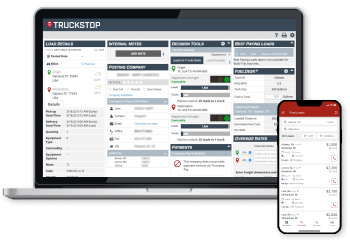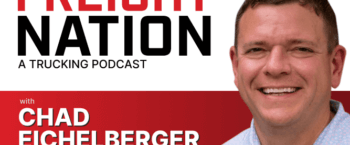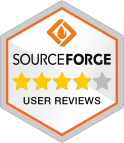Tips for Building Your Freight Broker Business

What are you waiting for?
Find capacity and increase margins starting now.
Creating a freight broker business is a great accomplishment, but it’s just the first step in a long journey. Once you’ve established your freight brokerage, the challenge for any business owner is growing that business. While there’s no magic formula for guaranteeing growth, there are several steps you can take to position your business for success.
In part 2 of our Broker Webinar Series, Truckstop’s Brett Jendra discussed how to build your broker business, including tips on getting your authority, understanding your business needs, establishing your brand, and finding your niche. You can also listen to the first webinar on becoming a freight broker.
Watch the Webinar: How to Build Your Broker Business
Getting your authority
Getting your broker authority is one of the first steps you should take, and allows you to facilitate load deliveries between shippers and carriers. Generally speaking, here are five steps a business owner needs to take to get their broker authority:
- Apply for a USDOT number with the Department of Transportation.
- Register with the FMCSA (Federal Motor Carrier Safety Administration).
- Fill out form OP-1 (Application for Motor Property Carrier and Broker Authority) to receive an MC number.
- Get a surety bond and apply for proof with the FMCSA.
- Complete form BOC-3 to designate a process agent for any state where your brokerage operates within 90 days of receiving your MC number.
Once you get your license, you can start doing business as a freight broker, although checking for additional state-specific requirements is highly recommended.
If you need help or want to focus on other aspects of your business, Truckstop offers a “Get Your Authority” program, which handles that process for you.
Understanding your business needs
Getting your authority is a big step, but it’s just the beginning. In order to run a successful freight broker, you’ll need to have a solid understanding of the business’s technology and financial needs.
Technology Needs
Every broker will have several technology needs, including, but not limited to:
- Load boards: Helps brokers find freight and connect with carriers. Truckstop offers a robust load board specifically designed for brokers.
- Rate tools: Helps brokers find the best rates, and are invaluable for managing the rate data you’ll have.
- Transportation management system (TMS): Saves time by streamlining many aspects of a broker’s business.
- Customer relationship management (CRM) tools: Allows you to manage, keep track of, and understand your customers and potential leads more easily.
- Additional tracking requirements: Depending on your industry and the state or states you operate it, you may have additional technology or tracking requirements.
Financial Needs
Not surprisingly, a freight broker business will also have critical financial needs.
To be successful, you’ll need to be able to answer the following questions:
- How will you pay carriers?
- How will you accept payment from shippers?
- How will you handle accessories?
- How will you handle cash flow?
- How are you paying for staff, equipment, insurance, and other components of your business?
Setting up your business profile
With those foundations taken care of, you’ll need to work on building your business profile and create a comprehensive marketing plan. The broker industry is highly competitive, and shippers get dozens – if not hundreds – of calls every day from brokers looking to sell their services. Standing out from the crowd is paramount.
A good first step is creating your brand and image. When crafting these, envision what you want people to think about when they see your company, and what traits, characteristics, and values you want them to associate with your business. Your brand will differentiate you from the rest of the competition.
Next, you’ll want to set up your business website and social media pages. These are often the first ways that people interact with your business, and should align with your brand and image. Ideally, they should be easy to navigate, explain your services, and provide a clear way for potential customers to find out more about you and contact you.
Your brand, image and website aren’t the only parts of your marketing plan. You’ll also want to consider shippers and carriers your business will target and how you’ll advertise your business and promote your services to them.
Finding your niche
It’s tempting to want to be a “jack of all trades” broker that can work with any kind of freight, any kind of carrier, and in any industry. But unless you have a long business history, that strategy is actually difficult to pull off and can backfire.
Instead, it’s best to start your broker business by focusing on one niche area, and then expanding into other areas.
For example, you could:
- Focus on one industry, such as only moving cheese.
- Focus on one geographic area, such as only moving between two states.
- Focus on one type of equipment, such as only using refrigerated trucks.
Want to learn more?
Building your freight broker business can seem like a daunting task, but we’re here to help. There will always be a need for businesses that can connect shippers and carriers, and there are clear steps you can take to boost your chances of success.
If you’re interested in more information or resources on how to grow your freight broker business, be sure to check out our latest webinar, or visit the Truckstop blog. You can also see part one of our series on how to become a freight broker here.

Find out how our platform gives you the visibility you need to get more done.
Get helpful content delivered to your inbox.
Schedule a demo.
Find out how our platform gives you the visibility you need to get more done.






